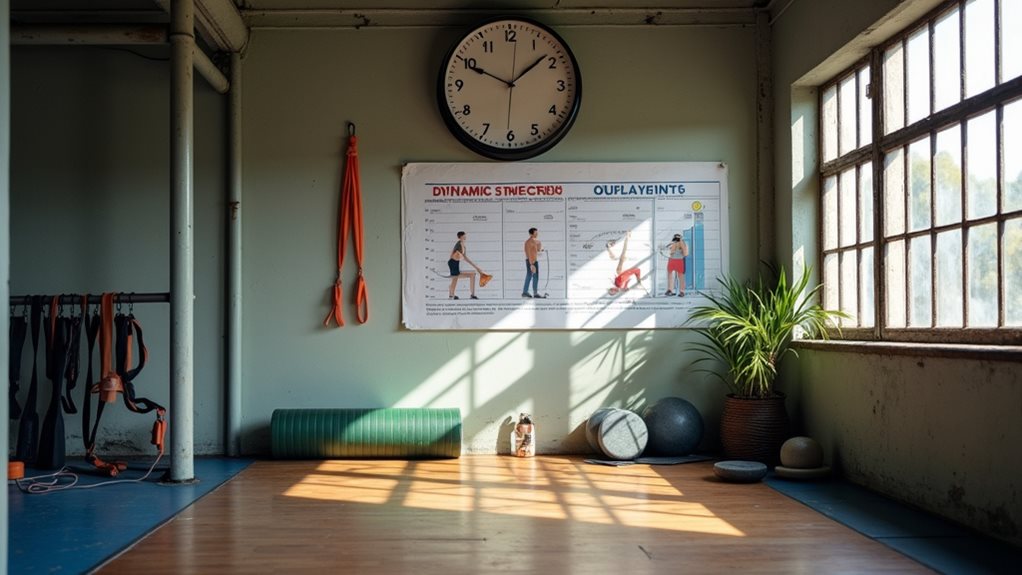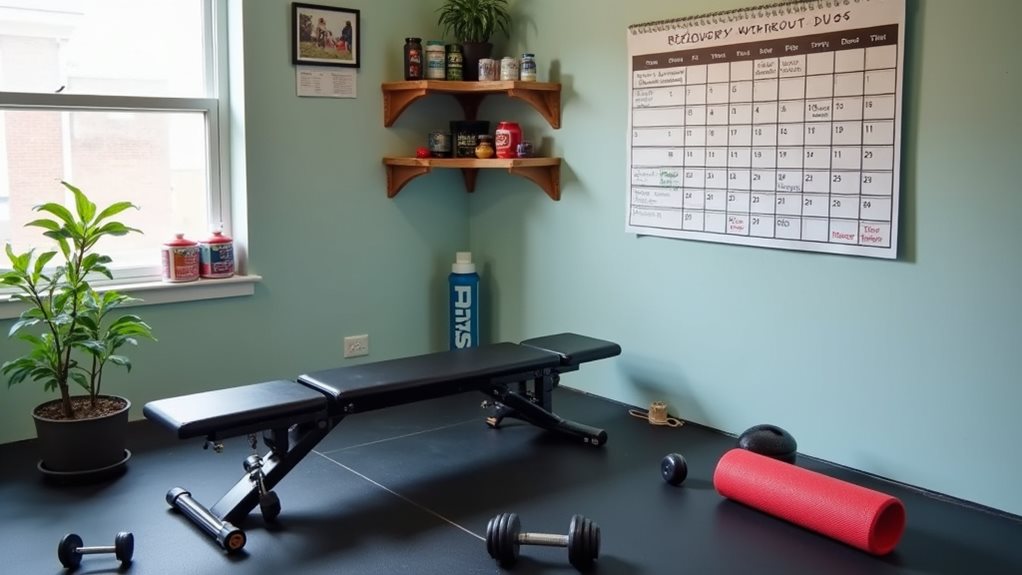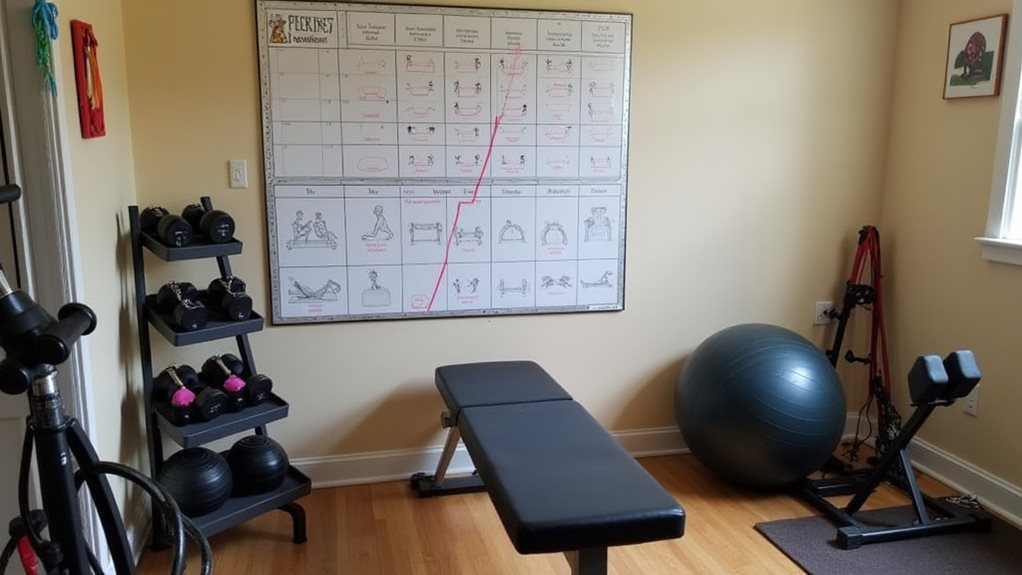Strength Training After 50: Avoid These Common Mistakes
You've decided to start strength training in your 50s—a smart move for your health and longevity. But before you grab those weights, you should know about several critical mistakes that could derail your progress or worse, lead to injury. Many fitness enthusiasts over 50 fall into these common traps, sabotaging their results without realizing it. What if the way you've been approaching your workouts is actually working against you?
Key Takeaways
- Skipping proper warm-up and mobility work increases injury risk for adults over 50.
- Lifting weights that are too heavy too soon can lead to tendon injuries and muscle strains.
- Inadequate recovery between strength training sessions hinders progress and increases injury potential.
- Avoiding compound movements limits overall strength gains that benefit daily functional activities.
- Following programs designed for younger individuals can lead to overtraining and slower progress.
Skipping Proper Warm-Up and Mobility Work

Although many older adults are enthusiastic to dive straight into their strength routine, skipping a proper warm-up and mobility work is one of the most common mistakes you can make after 50. Your body needs more preparation time as you age, and cold muscles are more susceptible to injury.
A proper warm-up increases blood flow, loosens stiff joints, and activates key muscle groups. Spend 5-10 minutes doing light cardio like walking or cycling, followed by dynamic stretches targeting the areas you'll train. Include mobility exercises such as arm circles, hip rotations, and gentle torso twists.
Don't confuse time spent warming up as wasted training time—it's an essential investment that improves your workout quality and recovery while reducing injury risk.
Dynamic mobility work for the shoulders, hips, and spine is particularly crucial for maintaining proper form during compound movements like squats and deadlifts.
Your future self will thank you.
Lifting Too Heavy Too Soon
A common pitfall for fitness enthusiasts over 50 is the enthusiasm to lift weights that exceed their current capabilities.
While your mind might remember what you could lift decades ago, your body needs time to adapt to progressive resistance.
Starting with excessive weight increases your risk of tendon injuries, joint pain, and muscle strains. These setbacks can derail your fitness journey for weeks or months.
Instead, begin with lighter weights that allow you to perform 12-15 repetitions with proper form.
You'll build a solid foundation by gradually increasing weight in small increments (2-5 pounds) only after mastering current loads.
This patient approach respects your body's adaptation timeline and minimizes injury risk while still delivering strength gains that will improve your quality of life.
For optimal joint health, aim to spend 4-6 weeks in the foundational phase to ensure proper technique before progressing to heavier weights.
Neglecting Recovery Between Workouts

While many fitness enthusiasts over 50 focus primarily on their workout intensity, they often underestimate the critical importance of recovery between sessions. Your body needs more time to repair muscle tissue as you age, making adequate rest essential for progress.
You'll need at least 48-72 hours between strength training the same muscle groups—significantly longer than younger exercisers require. Signs you're not recovering enough include persistent soreness, decreased performance, disrupted sleep, and unusual fatigue.
Enhance recovery by prioritizing quality sleep, maintaining proper hydration, consuming adequate protein, and incorporating active recovery like walking or swimming on rest days.
Consuming 1-1.2 grams protein per kilogram of body weight daily supports muscle repair and helps maintain strength as you age.
Consider adding gentle stretching or yoga to improve circulation and flexibility. Remember, your strength gains actually happen during recovery, not during the workout itself. Proper rest isn't laziness—it's a strategic component of successful training.
Avoiding Compound Movements Due to Fear
Many over-50 exercisers shy away from compound movements like squats, deadlifts, and bench presses due to fears about safety and injury risk. However, these multi-joint exercises provide the greatest benefits for maintaining muscle mass, bone density, and functional strength as you age. Research shows that progressive resistance training can significantly slow the 3-5% muscle mass loss per decade that typically occurs after age 40.
| Compound Exercise | Benefits | Safety Tip |
|---|---|---|
| Squats | Strengthens entire lower body | Begin with box squats for depth control |
| Deadlifts | Builds posterior chain and core | Start with elevated handles or trap bar |
| Bench Press | Develops chest, shoulders, arms | Use dumbbells for shoulder-friendly angles |
Don't let fear prevent you from these essential movements. Start with lighter weights, focus on proper form, and progress gradually. Consider working with a qualified trainer who understands age-appropriate modifications while still challenging your body effectively.
Following Programs Designed for Younger Athletes

Most exercise programs found in fitness magazines and online platforms are designed for individuals in their 20s and 30s, yet numerous older adults attempt to follow these routines without proper modifications.
Your recovery capacity changes markedly after 50. Programs demanding daily high-intensity workouts can lead to overtraining, joint pain, and potential injuries. Your body needs more recovery time between sessions—typically 48-72 hours for the same muscle groups.
Instead, seek age-appropriate programs that emphasize proper form, moderate progression, and adequate recovery periods. Look for routines specifically created for older adults or modify existing programs by reducing volume (sets and reps), increasing rest intervals, and prioritizing quality over quantity.
Remember that consistency trumps intensity at this stage. You'll achieve better results with three well-executed workouts weekly than with an unsustainable daily regimen that leads to burnout.
Frequently Asked Questions
How Does Hormone Replacement Therapy Affect Strength Training Results?
Hormone replacement therapy can boost your strength training results by increasing muscle mass, enhancing recovery, and improving energy levels. You'll likely see faster gains when hormones are optimized.
Should I Train Differently if I Have Arthritis or Joint Replacements?
Yes, you'll need modified exercises with arthritis or joint replacements. Work with a physical therapist, use lower resistance, avoid painful movements, and incorporate more water exercises for joint protection.
Are Machines Safer Than Free Weights for Older Trainees?
Machines can be safer since they guide movement and reduce balance demands. However, you'll still benefit from free weights for functional strength if you use proper form.
How Do I Modify Training When Dealing With Chronic Health Conditions?
You'll need to consult your doctor first, then modify intensity, choose appropriate exercises, monitor symptoms, and prioritize recovery when training with chronic health conditions.
What Nutrition Changes Should Accompany Strength Training After 50?
Fuel your body like a well-oiled machine. You'll need more protein (1g per pound of bodyweight), adequate hydration, calcium-rich foods, and vitamin D. Don't cut calories too drastically while building muscle.
Conclusion
Your fitness journey after 50 isn't a sprint but a marathon. You've now got the roadmap to navigate strength training's common pitfalls—warming up properly, starting with appropriate weights, prioritizing recovery, embracing compound movements, and following age-appropriate programs. Remember, it's never too late to build a stronger foundation. Your body is a temple that deserves proper maintenance, not rushed renovations.
